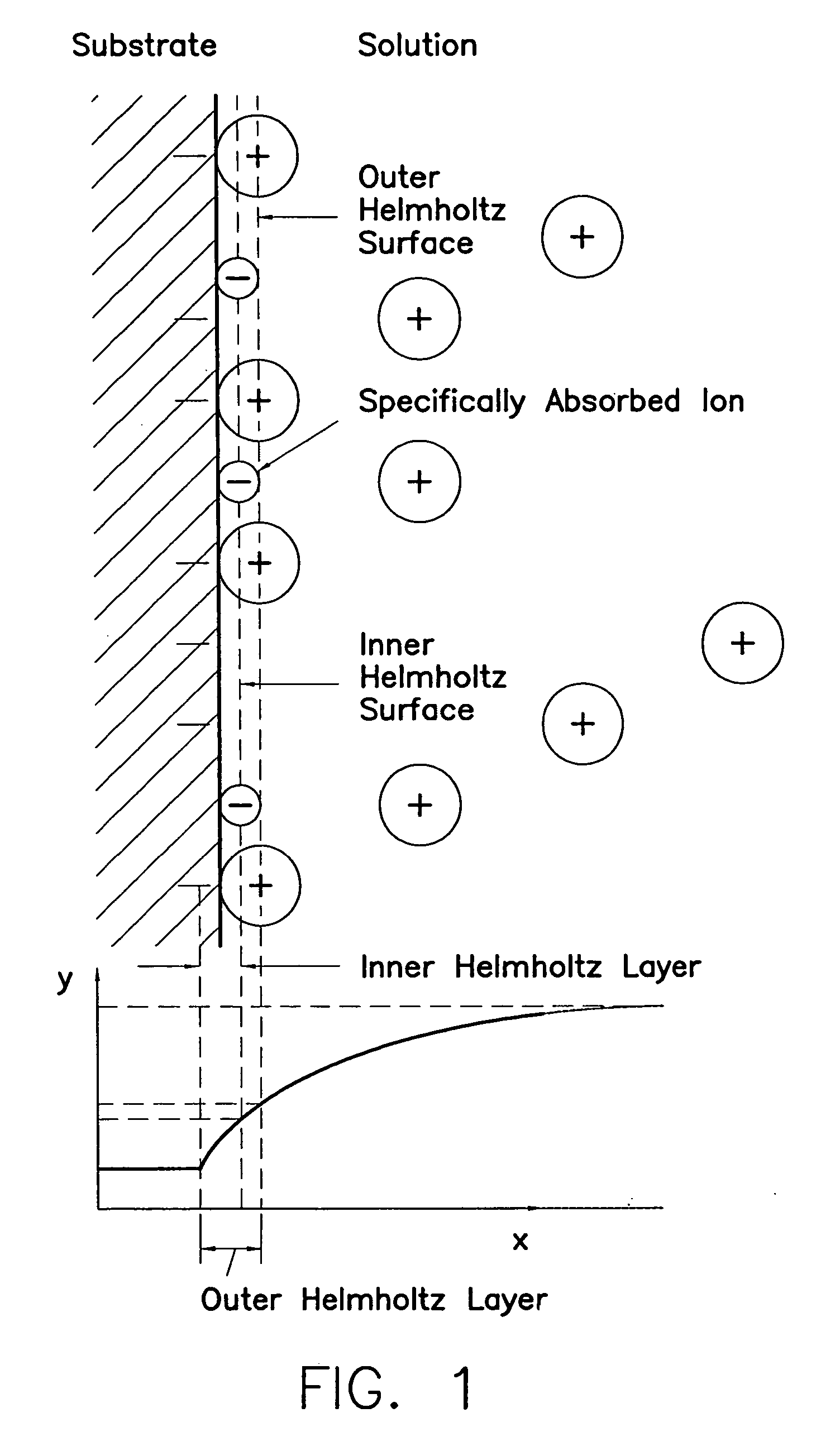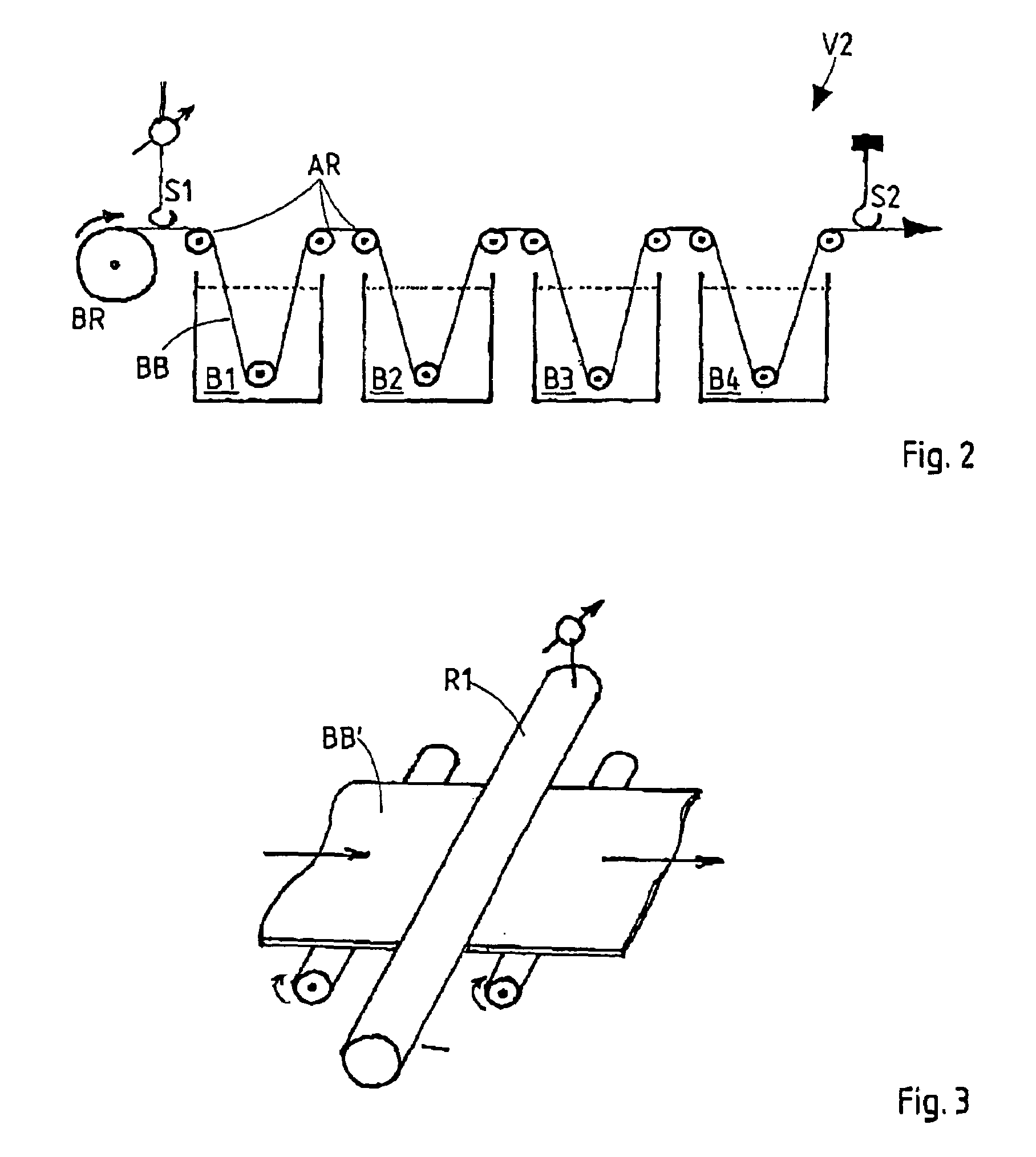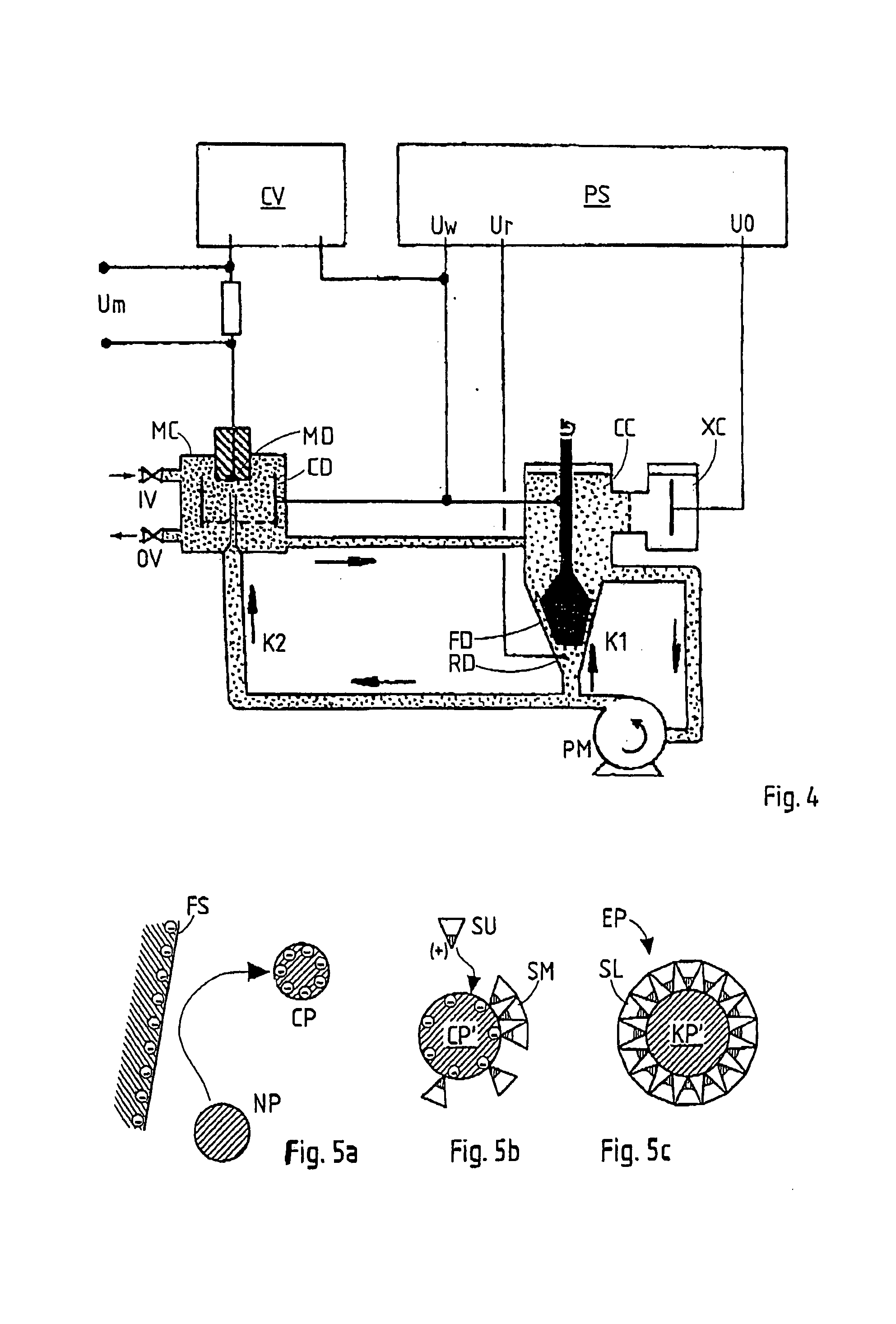Method of depositing S-layer proteins on a carrier to immobilize functional molecules
a technology of functional molecules and s-layer proteins, which is applied in the direction of immobilised enzymes, peptide preparation methods, enzymes, etc., can solve the problems of difficult control of the production process of s-layer proteins, formation of crystalline double and multiple layers, and less satisfactory success
- Summary
- Abstract
- Description
- Claims
- Application Information
AI Technical Summary
Benefits of technology
Problems solved by technology
Method used
Image
Examples
example 1
[0053]The layer protein SbsB—e.g. in its recombinantly produced form, which is designated as rSbsBg2-920—as a mature protein has a theoretical isoelectric point (pI) of 4.95. The N-terminal region (amino acids 32-207), which comprises three so-called S-layer homologous motifs (SLH-motifs), has a pI of 8.94; for the remainder of the sequence (amino acids 208-920) a pI of 4.73 was calculated (see Table 1). Experiments with recombinantly produced, N-terminal shortened SbsB shapes, from which up to 3 SLH motifs were missing, confirmed that the N-terminus is not involved in the self-assembly operation.
[0054]For the production of soluble S-layer proteins (S-layer monomers or oligomers for the crystallization on solid surfaces) 0.2 mg of S-layer self-assembly products of rSbsB32-920 (monomolecular S-layer-protein crystals with a size of 0.1 to 5 μm) were dissolved in 1 ml of 5 M guanidine hydrochloride (GHCl) in 50 mM TRIS-HCL buffer (pH 7.2), and dialysized for 24 hours at 4° C. using pur...
example 2
[0060]In these tests, a recombinantly produced rSbsB-streptavidin protein was produced. The functional domain (Streptavidin) is merged on the C-terminal end of the S-layer proteins. The pI of the sequence, which is between amino acids 208-920 of SbsB and includes the heterotetrameric Streptavidin is 5.60. The C-terminal SbsB-Streptavidin-fusion protein is water soluble and forms the diagonal S-layer lattice only on pre-conditioned surfaces (e.g. cell wall sacculi of Bacillus stearothermophilus PV72 / p2, which contain peptidoglycane of the Alγ-chemo-type and the secondary cell wall polymer that is typical for the organism).
[0061]For the recrystallization, a solution that contained 200 μg of the fusion protein in 500 μl purified water was brought into contact with a negatively charged solid surface 5 mm2 in size. The bond of the fusion protein occurred in this case over the positively charged N-terminal region at a pH value of 6.0. For the stabilization of the S-layer lattice, 500 μl o...
example 3
[0062]The mature S-layer protein SbpA (amino acids 31-1268; pI 4.60; see Table 1) crystallizes in a square lattice. The N-terminal part (amino acids 31-202) of the mature S-layer proteins comprises the 3 SLH motifs and the bonding region for the secondary cell wall polymer and has a pI of 4.49. The pI of the remaining sequence (amino acids 203-1268) is at 4.68. The N-terminal part is not involved in the self-assembly operation.
[0063]Bivalent cations are necessary for the formation of self-assembly products with square lattices. A solution that contained 200 μg of rSbpA per ml of purified water and a pH value of 6.0 was applied to a positively charged carrier surface 5 mm2 in size and incubated at 20° C. for 2 hours. Then, the excess S-layer protein solution was washed away. For the formation of the crystal lattice, a 10 mM CaCl2 solution was applied to the carrier surface and incubated for 2 hours at 20° C. After washing with purified water, the carrier was examined in the AFM. Area...
PUM
| Property | Measurement | Unit |
|---|---|---|
| Volume | aaaaa | aaaaa |
| Volume | aaaaa | aaaaa |
| Volume | aaaaa | aaaaa |
Abstract
Description
Claims
Application Information
 Login to View More
Login to View More - R&D
- Intellectual Property
- Life Sciences
- Materials
- Tech Scout
- Unparalleled Data Quality
- Higher Quality Content
- 60% Fewer Hallucinations
Browse by: Latest US Patents, China's latest patents, Technical Efficacy Thesaurus, Application Domain, Technology Topic, Popular Technical Reports.
© 2025 PatSnap. All rights reserved.Legal|Privacy policy|Modern Slavery Act Transparency Statement|Sitemap|About US| Contact US: help@patsnap.com



